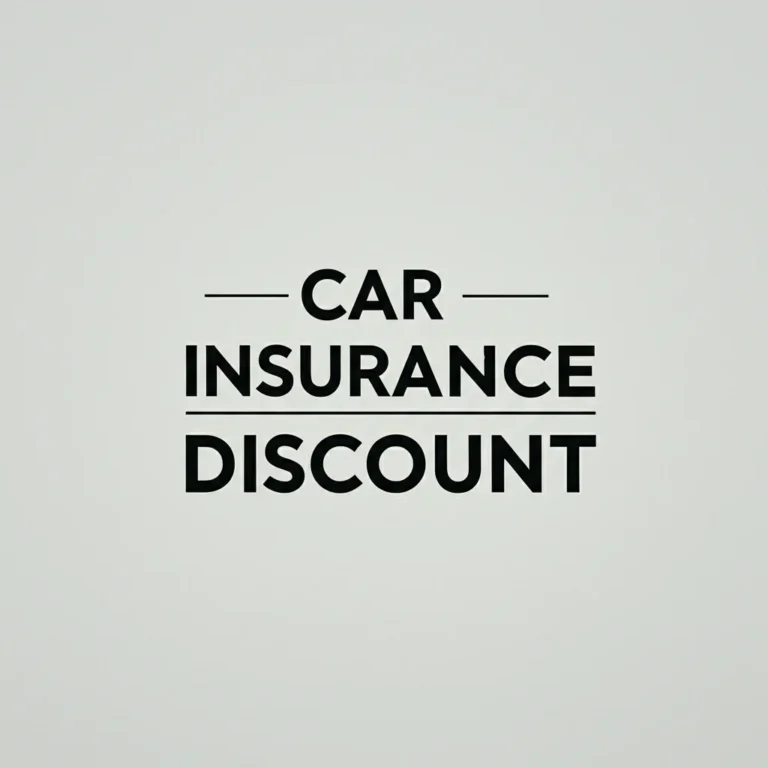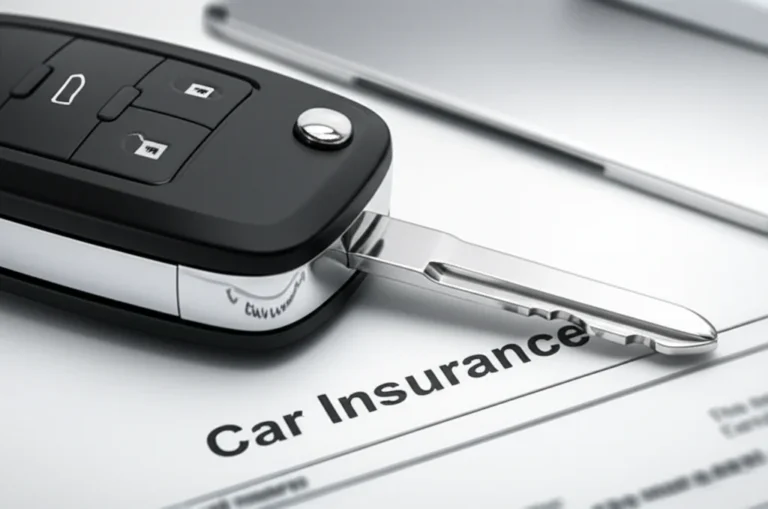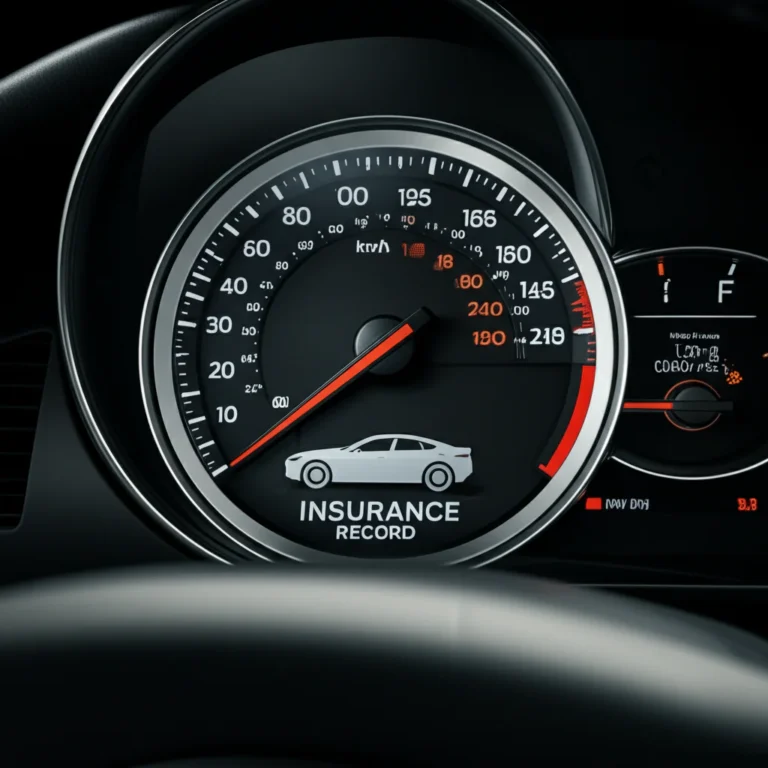Support our educational content for free when you purchase through links on our site. Learn more
13 Car Insurance Coverage Options You Must Know in 2025 🚗
When was the last time you really looked at your car insurance policy? If you’re like most drivers, the answer might be “never” or “only when it was time to renew.” But here’s a little secret from the Car Brands™ garage: understanding your car insurance coverage options can save you thousands of dollars and a world of headaches down the road. With the insurance landscape shifting fast—think rising uninsured drivers and new tech-driven discounts—knowing what coverage you truly need is more important than ever.
In this ultimate guide, we break down 13 essential and optional coverage types, from the basics like liability and collision to lesser-known gems like gap insurance and accident forgiveness. We’ll also share insider tips on how to pick the right mix for your unique ride and budget. Curious about whether dropping collision on your old car is a smart move? Wondering how uninsured motorist coverage can be your financial lifesaver? Stick around—we’ve got you covered.
Key Takeaways
- Liability coverage is legally required and protects others from your mistakes.
- Uninsured/Underinsured Motorist coverage is increasingly vital as uninsured drivers rise.
- Collision and comprehensive protect your car from accidents and other damages.
- Gap insurance bridges the gap between what you owe and what your car is worth.
- Smart shopping and bundling policies can save you money without sacrificing coverage.
- Customize your policy with add-ons like roadside assistance and rental reimbursement for peace of mind.
Ready to take control of your car insurance? Keep reading to unlock expert insights and make your next policy your best one yet!
Table of Contents
- ⚡️ Quick Tips and Facts
- 🕰️ The Evolution of Auto Protection: A Brief History of Car Insurance
- 🤔 Understanding the Core: What is Car Insurance and Why Do You Need It?
- ✅ The Essential Pillars: Mandatory Car Insurance Coverage Options
- 🌟 Beyond the Basics: Optional Car Insurance Coverage Options for Comprehensive Protection
- 4. 🚗 Collision Coverage: Fixing Your Car After an Accident
- 5. 🌳 Comprehensive Coverage: Protecting Your Car from Everything Else
- 6. 💰 Gap Insurance: Bridging the Loan-Value Divide
- 7. ⚙️ Roadside Assistance & Towing: Your On-Demand Lifeline
- 8. 렌탈카 🚗 Rental Car Reimbursement: Staying Mobile After a Claim
- 9. 🔧 Custom Parts & Equipment Coverage: Protecting Your Mods
- 10. 📝 New Car Replacement & Agreed Value Coverage: For Peace of Mind with New Rides
- 11. ❌ Accident Forgiveness: A Get-Out-of-Jail-Free Card?
- 12. 👻 Non-Owner Car Insurance: For Drivers Without Their Own Vehicle
- 13. 📈 SR-22/FR-44 Filings: High-Risk Driver Requirements
- 🔍 Deciphering the Details: Key Terms & Concepts You Need to Know
- 🗺️ Navigating the Maze: How to Choose the Right Car Insurance Coverage for You
- 💰 Smart Strategies: How to Save Money on Car Insurance Without Sacrificing Coverage
- 🚨 The Claims Process: What Happens When You Need Your Insurance?
- ✍️ Getting Your Best Quote: A Step-by-Step Guide to Finding the Right Policy
- 🏁 Conclusion: Driving Forward with Confidence
- 🔗 Recommended Links
- ❓ FAQ: Your Burning Car Insurance Questions Answered
- 📚 Reference Links
Here at Car Brands™, we’ve spent countless hours behind the wheel, under the hood, and deep in the fine print of everything automotive. We know cars, and we know what it takes to protect them. Today, we’re diving headfirst into the wild world of car insurance coverage options, a topic that can feel as complex as a supercar’s wiring diagram. But don’t you worry! We’re here to pop the hood, demystify the jargon, and turn you into a confident, savvy car insurance shopper. Let’s get this show on the road!
⚡️ Quick Tips and Facts
In a hurry? Here’s the high-octane summary to get you started:
- Liability is King (and Law): In nearly every state, you’re legally required to have liability coverage. This pays for damage you cause to others.
- Full Coverage Isn’t a “Thing”: “Full coverage” is just a common term for a policy that includes Liability, plus Collision and Comprehensive to protect your own car.
- Mind the Gap: If you have a loan or lease, Gap Insurance is a potential lifesaver, covering the difference between your car’s value and what you still owe if it’s totaled.
- Deductibles are a Balancing Act: A higher deductible means a lower premium (your regular payment), but you’ll pay more out-of-pocket if you have a claim. As the expert in our #featured-video points out, for older cars, it might be time to raise that deductible or drop collision coverage altogether.
- Not All Policies are Created Equal: Coverage options and names can vary wildly between companies like Progressive and Liberty Mutual. Always compare apples to apples!
- Uninsured Drivers are a Real Threat: With insurance premiums on the rise, more people are driving without adequate coverage. Uninsured/Underinsured Motorist (UM/UIM) coverage is your shield against them.
🕰️ The Evolution of Auto Protection: A Brief History of Car Insurance
Ever wonder how we got here? Picture this: the late 1890s. The first cars are sputtering down cobblestone streets, sharing the road with horses and pedestrians. Accidents were… messy. In 1897, a gentleman named Gilbert J. Loomis bought the very first auto insurance policy to protect himself financially if his car injured someone or damaged property. It was a simple liability policy.
As cars got faster and more common (thanks, Ford Model T!), the need for more complex protection grew. States began making liability insurance mandatory, and new coverages were invented to handle everything from theft to storm damage. This journey is a core part of many Car Brand Histories—the cars and the ways we protect them evolved together. What started as a simple shield has become a customizable suit of armor for our four-wheeled companions.
🤔 Understanding the Core: What is Car Insurance and Why Do You Need It?
At its heart, “Car insurance is a contract between you and an insurance company. You agree to pay a premium, and in exchange, the insurance company agrees to pay for certain financial losses.” Think of it as a financial safety net. You pay a little bit regularly so you don’t have to pay a whole lot later if something goes wrong.
📜 The Legal Imperative: State Minimum Requirements
Let’s get the legal stuff out of the way. With the exception of a couple of states, you are legally required to have a minimum amount of car insurance to drive. This isn’t just bureaucratic red tape; it’s about ensuring that if you cause an accident, you can cover the costs for the other person’s injuries or property damage. Driving without it can lead to hefty fines, license suspension, and a world of financial pain.
🧘♀️ Beyond the Law: Protecting Your Assets & Peace of Mind
Here’s the deal: state minimums are often dangerously low. The expert in the #featured-video warns that sticking to the bare minimum is “very, very risky.” If you cause a serious accident, the costs can easily skyrocket past those minimum limits. When that happens, guess who’s on the hook for the rest? You are. They can go after your savings, your home—your future.
Proper insurance isn’t just about protecting your car; it’s about protecting your entire financial life. It’s the peace of mind that comes from knowing a bad day on the road won’t turn into a devastating financial crisis.
✅ The Essential Pillars: Mandatory Car Insurance Coverage Options
These are the foundational coverages that form the basis of almost every policy. While some are optional depending on your state, they are the absolute must-haves for responsible drivers.
1. 🛡️ Liability Coverage: Protecting Others from Your Mistakes
This is the big one, the cornerstone of all auto insurance. It covers damages you cause to other people and their property. It does not cover you, your passengers, or your car. It’s typically split into two parts:
-
🤕 Bodily Injury Liability (BIL): For Injuries to Others
If you’re at fault in an accident, this helps pay for the other party’s medical bills, lost wages, and even pain and suffering. It’s usually shown as two numbers, like $25,000/$50,000. The first is the maximum paid per person, and the second is the maximum paid per accident.
-
🚗💥 Property Damage Liability (PDL): For Damage to Other’s Property
This covers the cost of repairing or replacing whatever you hit, whether it’s another car, a fence, or a storefront. With the cost of modern cars packed with sensors and tech, this is more important than ever.
2. 🏥 Uninsured/Underinsured Motorist (UM/UIM) Coverage: When Others Don’t Have Enough
What happens when the person who hits you has no insurance, or just the bare minimum? That’s where UM/UIM comes in. As noted in the video summary, with the insurance market in “turmoil,” the number of uninsured drivers is rising, making this coverage critical.
-
🚑 UM Bodily Injury: For Your Injuries When the Other Driver Lacks Coverage
This steps in to cover your medical bills and lost wages if you’re hit by an uninsured driver or in a hit-and-run.
-
💰 UIM Bodily Injury: When the Other Driver’s Coverage Isn’t Enough
If the at-fault driver has insurance, but their policy limits are too low to cover your medical bills, UIM helps cover the remaining amount.
-
🛠️ UM Property Damage: For Your Car When the Other Driver Lacks Coverage
In some states, this is available to repair your car if it’s damaged by an uninsured driver.
3. ⚕️ Personal Injury Protection (PIP) & Medical Payments (MedPay): Covering Your Medical Bills
These coverages help pay for your and your passengers’ medical expenses after an accident, regardless of who is at fault.
-
🩹 PIP: No-Fault Medical & More (Where Applicable)
Required in “no-fault” states, PIP is broader than MedPay. It can cover medical bills, but also things like lost wages and rehabilitation services.
-
🩺 MedPay: Pure Medical Expense Coverage
This is an optional coverage in most states that helps pay for initial medical expenses for you and your passengers. It can supplement your health insurance by covering deductibles and co-pays.
🌟 Beyond the Basics: Optional Car Insurance Coverage Options for Comprehensive Protection
Once you’ve got the essentials locked down, it’s time to build out your armor. These optional coverages protect your car and your wallet from a whole host of other problems.
4. 🚗 Collision Coverage
This is straightforward: it pays to repair or replace your car if it’s damaged in a collision with another vehicle or an object (like a tree or a guardrail), regardless of who is at fault. If you have a loan or lease on your car, your lender will almost certainly require you to have this.
5. 🌳 Comprehensive Coverage
Think of this as “everything but collision” coverage. It protects your car from damage from non-collision incidents like:
- ✅ Theft and vandalism
- ✅ Fire and explosions
- ✅ Hitting an animal (a surprisingly common claim!)
- ✅ Falling objects (trees, hail, etc.)
- ✅ Natural disasters like floods and earthquakes
Like Collision, this is usually required by lenders.
6. 💰 Gap Insurance: Bridging the Loan-Value Divide
Here’s a scary scenario: you total your new car, but you owe more on your loan than the car’s actual cash value (ACV). Your insurance company pays out the ACV, leaving you to pay the rest of the loan for a car you can’t even drive! Gap insurance (or loan/lease payoff coverage) covers that “gap.” Progressive notes their coverage can pay up to 25% of the vehicle’s ACV.
7. ⚙️ Roadside Assistance & Towing: Your On-Demand Lifeline
We’ve all been there. A flat tire, a dead battery, or locking your keys in the car. Roadside assistance is a cheap add-on that can save you a massive headache, covering services like towing, jump-starts, and fuel delivery.
8. 렌탈카 🚗 Rental Car Reimbursement: Staying Mobile After a Claim
If your car is in the shop after a covered claim, how will you get to work? Rental reimbursement helps cover the cost of a rental car up to a certain daily limit for a specific period. It’s a small cost for a huge convenience.
9. 🔧 Custom Parts & Equipment Coverage: Protecting Your Mods
Did you install a killer sound system, custom wheels, or a special paint job? Standard policies usually don’t cover these aftermarket additions. Custom Parts and Equipment (CPE) coverage does. Progressive offers CPE with a typical limit of $5,000.
10. 📝 New Car Replacement & Agreed Value Coverage: For Peace of Mind with New Rides
Some companies offer fantastic perks for new vehicles. Liberty Mutual’s Better Car Replacement is a great example: “If your car is totaled, we’ll give you the money for a model that’s one year newer.” This is a huge step up from a standard Actual Cash Value payout. For classic or collector cars, Agreed Value coverage lets you and the insurer agree on the car’s value upfront, so there are no surprises if you have a total loss.
11. ❌ Accident Forgiveness: A Get-Out-of-Jail-Free Card?
Some insurers offer this feature (often as a reward for safe driving) that prevents your rates from going up after your first at-fault accident. It can be a valuable perk, but read the fine print to see how you qualify and what it covers.
12. 👻 Non-Owner Car Insurance: For Drivers Without Their Own Vehicle
If you frequently borrow or rent cars but don’t own one, this policy provides liability coverage for you while you’re driving someone else’s vehicle. It’s a smart move for city dwellers or frequent travelers.
13. 📈 SR-22/FR-44 Filings: High-Risk Driver Requirements
This isn’t a type of coverage, but rather a certificate your insurer files with the state to prove you have insurance. It’s typically required after a major violation like a DUI or driving without insurance. If you need one, you’ll know it.
🔍 Deciphering the Details: Key Terms & Concepts You Need to Know
Let’s quickly translate some of that insurance-speak into plain English.
-
💸 Deductibles: Your Out-of-Pocket Contribution
This is the amount you pay before your insurance kicks in for a Collision or Comprehensive claim. If you have a $500 deductible and $3,000 in damage, you pay $500, and the insurer pays $2,500. -
🏷️ Premiums: The Price You Pay
This is your regular payment (monthly, semi-annually, etc.) to keep your policy active. -
🛑 Policy Limits: The Maximum Payouts
This is the maximum amount your insurance company will pay for a covered claim. For liability, this is crucial. If your limit is $50,000 and you cause $80,000 in damages, you’re responsible for the $30,000 difference. -
🚫 Exclusions: What Your Policy WON’T Cover
Every policy has exclusions. Common ones include intentional damage, racing, and using your personal vehicle for commercial purposes (like ridesharing, which requires special coverage). -
✍️ Endorsements & Riders: Customizing Your Policy
These are simply add-ons that modify your policy. Roadside Assistance and Rental Reimbursement are common endorsements.
🗺️ Navigating the Maze: How to Choose the Right Car Insurance Coverage for You
Okay, you know the options. Now, how do you build the perfect policy? As Liberty Mutual wisely states, “Every driver on the road is unique. Your car, your driving history, and of course your budget determines the kinds of coverage options to consider…”
🤔 Assessing Your Needs: What’s Your Risk Profile?
Ask yourself these questions:
- What’s my car worth? If you drive an older car that’s paid off, the cost of Collision and Comprehensive might be more than the car is worth. The expert in the #featured-video suggests dropping these coverages if the annual premium exceeds 10% of the car’s value.
- Is my car financed? If yes, you’ll be required to have Collision and Comprehensive.
- What are my assets? The more you have to lose (savings, home), the higher your liability limits should be.
- How much can I afford out-of-pocket? This will determine your deductible. A higher deductible is fine if you have the savings to cover it.
⚖️ Understanding State Minimums vs. Optimal Protection
We’ll say it again: state minimums are not enough. They are a floor, not a recommendation. We at Car Brands™ strongly advise getting liability limits far above the minimum. A common recommendation is 100/300/100 ($100k per person, $300k per accident for bodily injury, and $100k for property damage), but an umbrella policy is even better for those with significant assets.
🎯 Balancing Cost and Coverage: The Sweet Spot
The goal is to find the point where you feel protected without overpaying. Don’t skimp on liability or UM/UIM. Find savings by adjusting your Collision/Comprehensive deductibles or by taking advantage of discounts.
🧑💻 Our Expert Recommendations for Different Driver Types
| Driver Type | Recommended Coverages | Key Considerations |
|---|---|---|
| The Teen Driver | High Liability, Collision, Comprehensive, Accident Forgiveness | Teens are high-risk. Maximize protection. Look for good student discounts. |
| The Daily Commuter | High Liability, UM/UIM, Rental Reimbursement, Roadside Assistance | More time on the road means more risk. Don’t let a breakdown ruin your work week. |
| The Owner of an Older Car | High Liability, UM/UIM, MedPay | Consider dropping Collision/Comprehensive if the car’s value is low. Raise the deductible. |
| The New Car Owner | High Liability, Collision, Comprehensive, Gap Insurance, New Car Replacement | Protect your investment! The value drops the second you drive off the lot. |
| The Rideshare Driver | High Liability, plus a specific Rideshare Endorsement | Your personal policy will not cover you while working. This is non-negotiable. |
💰 Smart Strategies: How to Save Money on Car Insurance Without Sacrificing Coverage
Who doesn’t love saving money? Here are some of our team’s favorite strategies for cutting down that premium.
-
🏡🚗 Bundling Policies: Home, Auto, and Beyond
Insuring your car and home (or apartment) with the same company can often unlock a significant discount. -
🎓 Discounts Galore: From Good Driver to Good Student
Ask about every possible discount: good driver, good student, defensive driving courses, low mileage, vehicle safety features (anti-lock brakes, airbags), and professional or alumni group affiliations. -
⬆️ Increasing Your Deductible (Wisely!)
As the video expert advises, “raise the deductible.” Bumping your Collision deductible from $250 to $1,000 can dramatically lower your premium. Just make sure you can comfortably pay that amount if needed. -
📊 Improving Your Credit Score: It Matters!
In many states, insurers use a credit-based insurance score to help determine rates. A better credit history can lead to lower premiums. -
📱 Telematics & Usage-Based Insurance: Drive Smart, Save More
Programs like Progressive’s Snapshot or Liberty Mutual’s RightTrack use an app or a small device to monitor your driving habits. Safe driving—like smooth braking and avoiding late-night trips—can earn you a big discount. -
🥇 Shopping Around & Comparing Quotes: The Golden Rule
This is the single most effective way to save. Rates for the exact same coverage can vary by hundreds or even thousands of dollars between companies. Get quotes from at least three to five different insurers before making a decision. Check out our latest Car Brand Market Shares report to see who the major players are.
🚨 The Claims Process: What Happens When You Need Your Insurance?
An accident is stressful enough. Knowing what to do next can make all the difference.
⚠️ Reporting an Accident: First Steps
- Ensure everyone is safe. Call 911 if there are injuries.
- Exchange information with the other driver: names, contact info, insurance company, and policy number.
- Document everything. Take photos of the scene, the damage to all vehicles, and any relevant road signs or conditions.
- Contact your insurer as soon as possible to start the claims process. Most have 24/7 hotlines or mobile apps to make it easy.
🗣️ Working with Adjusters: What to Expect
An insurance adjuster will be assigned to your case. Their job is to investigate the accident, determine fault, and assess the damage. Be honest and provide all the documentation you have. They will guide you on the next steps for getting your car inspected and repaired.
🛠️ Understanding Payouts & Repairs
You generally have the right to choose your own repair shop. The insurer will provide an estimate, and if the shop finds more damage, they will work with the adjuster to get it approved. If your car is declared a total loss, the insurer will pay you the Actual Cash Value (ACV) of the vehicle, minus your deductible.
✍️ Getting Your Best Quote: A Step-by-Step Guide to Finding the Right Policy
Ready to find your perfect policy? Let’s do this.
📄 Gathering Your Information: What You’ll Need
Have this info handy for a smooth quoting process:
- Driver’s license numbers for all drivers in the household.
- Vehicle Identification Number (VIN) for all cars.
- The address where the vehicles are kept.
- Your current insurance policy, so you can compare coverages.
💻📞 Online Quotes vs. Agents: Pros and Cons
- Online: Fast, easy, and great for comparing prices quickly. Perfect if you know exactly what coverage you want.
- Agents: An independent agent can shop multiple companies for you and provide expert advice tailored to your situation. This is a great option if you’re unsure what you need.
🍎 Comparing Apples to Apples: Beyond Just the Price Tag
When you get your quotes, make sure you’re comparing policies with the exact same liability limits, coverages, and deductibles. The cheapest quote might have dangerously low limits or be missing a key coverage like UM/UIM. Look at company reviews for customer service and claims handling, too. A cheap policy isn’t worth it if the company is impossible to deal with when you need them most.
Ready to start comparing?
- 👉 Shop Major Insurers Directly:
- Use Comparison Platforms:
- Compare Quotes on: Edmunds | Auto Trader
🏁 Conclusion: Driving Forward with Confidence
Well, we’ve taken a deep dive into the vast ocean of car insurance coverage options, and by now, you’re no longer just a passenger—you’re the captain of your insurance ship! From the essential pillars like liability coverage that protect others from your mistakes, to the optional but highly recommended shields like collision, comprehensive, and gap insurance, you now have the tools to build a policy tailored to your unique needs.
Remember our early teaser about the risks of sticking to state minimums? We hope it’s clear now that while minimums keep you legal, they don’t always keep you safe financially. The rising tide of uninsured drivers makes UM/UIM coverage a must-have shield. And for those with newer or financed vehicles, collision and comprehensive are non-negotiable to protect your investment.
Our experts at Car Brands™ recommend you approach your policy like you approach your car: with care, customization, and a keen eye for quality. Don’t settle for the cheapest quote without checking the fine print and coverage details. And don’t forget to shop around—insurance companies vary widely in price and service.
So, buckle up, choose wisely, and drive with the confidence that comes from knowing you’re protected on every mile. Your car is more than metal and rubber—it’s your freedom, your investment, and sometimes, your second home. Treat it (and yourself) accordingly.
🔗 Recommended Links
Ready to start shopping for your perfect car insurance coverage? Here are some top platforms and official sites to get you rolling:
-
Progressive Auto Insurance:
Progressive Official Website | Edmunds Progressive Quotes | Auto Trader Progressive Quotes -
Liberty Mutual Auto Insurance:
Liberty Mutual Official Website | Edmunds Liberty Mutual Quotes | Auto Trader Liberty Mutual Quotes
❓ FAQ: Your Burning Car Insurance Questions Answered
What are the different types of car insurance coverage options?
Car insurance coverage comes in many flavors, but the core types include:
- Liability Coverage: Pays for injuries and property damage you cause to others.
- Collision Coverage: Covers damage to your car from collisions.
- Comprehensive Coverage: Protects against non-collision damage like theft, fire, or natural disasters.
- Uninsured/Underinsured Motorist Coverage: Protects you if the other driver lacks sufficient insurance.
- Personal Injury Protection (PIP) and Medical Payments (MedPay): Covers medical expenses for you and passengers.
- Optional Coverages: Gap insurance, roadside assistance, rental reimbursement, custom parts coverage, and more.
Each serves a distinct purpose, and your ideal policy is a combination tailored to your vehicle, finances, and risk tolerance.
How do liability and comprehensive coverage differ in car insurance?
Liability coverage protects others—it pays for injuries or property damage you cause to other people when you’re at fault. It does not cover your own injuries or vehicle damage.
Comprehensive coverage, on the other hand, protects your vehicle from damage caused by events other than collisions—think theft, vandalism, natural disasters, or hitting an animal. It’s optional but highly recommended for newer or financed cars.
What factors should I consider when choosing car insurance coverage?
Choosing coverage depends on several factors:
- Your vehicle’s value: Older cars may not justify collision/comprehensive coverage.
- State requirements: Minimum liability limits vary by state.
- Your financial situation: Higher liability limits protect your assets.
- Loan or lease status: Lenders usually require collision and comprehensive.
- Risk tolerance: How much risk are you comfortable assuming?
- Driving habits: More miles or risky driving may require broader coverage.
Balancing these factors helps you find the sweet spot between protection and cost.
Is collision coverage necessary for all drivers?
❌ Not necessarily. If you drive an older car that’s worth less than the cost of collision coverage premiums plus deductible, it might make sense to drop it. However, if your car is financed or leased, your lender will require collision coverage.
How does uninsured motorist coverage protect me?
Uninsured Motorist (UM) coverage protects you if you’re in an accident caused by a driver who has no insurance or insufficient insurance. It can cover your medical bills, lost wages, and sometimes property damage. Given the rising number of uninsured drivers, UM coverage is a smart safety net.
Can I customize my car insurance policy with additional coverage options?
Absolutely! Most insurers offer endorsements or riders to customize your policy. Options include roadside assistance, rental car reimbursement, custom parts coverage, accident forgiveness, and more. Tailoring your policy ensures you only pay for what you need.
What are the benefits of full coverage car insurance?
“Full coverage” typically means a combination of liability, collision, and comprehensive coverage. Benefits include:
- Protection for your vehicle from a wide range of risks.
- Peace of mind knowing you’re covered regardless of fault.
- Compliance with lender requirements.
- Potential access to perks like new car replacement or accident forgiveness.
While it costs more than minimum coverage, full coverage is often worth the investment, especially for newer vehicles.
📚 Reference Links
For further reading and verification, check out these authoritative sources:
- Liberty Mutual Auto Insurance Coverage Options
- Progressive Auto Insurance Coverages
- NerdWallet: Types of Car Insurance
- NerdWallet: How to Tell the Difference Between Common Types of Car Insurance
- Insurance Information Institute: Auto Insurance Basics
- National Association of Insurance Commissioners (NAIC)
Explore more about car insurance and related topics on Car Brands™:
- Car Brand Comparisons
- Car Brand Lists
- Auto Industry News
- Car Brand Market Shares
- Car Brand Histories
Thanks for riding along with Car Brands™! Now, go forth and insure smartly—your car (and wallet) will thank you. 🚗💨





